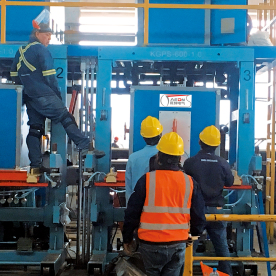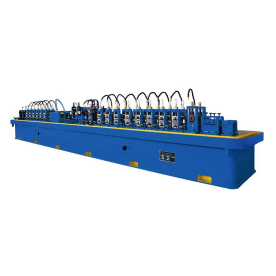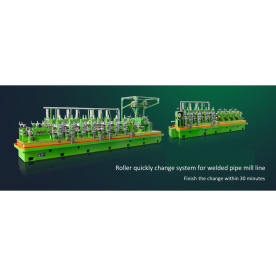[Complete Pipe mill production line solution]Exploring the Complete Pipe Mill Production Line Solution: A Comprehensive Overview of Equipment, Processes, and Benefits for Modern Manufacturers
News 2024-12-17
In today’s fast-paced industrial world, the need for efficiency and precision in manufacturing processes has never been more critical. One of the key elements that contribute to the success of a manufacturing unit is its production line. Specifically, the Complete Pipe Mill Production Line Solution is a vital system in pipe manufacturing, ensuring that quality pipes are produced efficiently and cost-effectively. This article delves into the components, processes, and benefits of implementing a complete pipe mill production line solution in modern manufacturing settings.

Exploring the Complete Pipe Mill Production Line Solution: A Comprehensive Overview of Equipment, Processes, and Benefits for Modern Manufacturers
A complete pipe mill production line consists of various equipment and processes designed to transform raw materials into finished pipes. The primary function of this line is to create pipes that meet stringent specifications for strength, durability, and quality. Typically, the production line comprises several key stages, including raw material preparation, pipe forming, welding, sizing, and final inspection.
Components of a Pipe Mill Production Line
1. **Raw Material Preparation**: The first step in pipe manufacturing involves the procurement and preparation of raw materials, typically steel coils. These coils are unwound and cut to the desired lengths before being fed into the pipe mill.

Exploring the Complete Pipe Mill Production Line Solution: A Comprehensive Overview of Equipment, Processes, and Benefits for Modern Manufacturers
3. **Welding**: Once the steel is shaped into pipes, the next critical stage is welding. This process is crucial for ensuring that the pipes are seamless and structurally sound. Various welding methods can be employed, including high-frequency induction welding and submerged arc welding, depending on the pipe's intended use and the material being processed.
4. **Sizing**: Following welding, the pipes are passed through sizing equipment to ensure they meet specific diameter and wall thickness requirements. This process guarantees uniformity and quality in the finished product.
5. **Cooling and Treatment**: After sizing, the newly formed pipes often undergo cooling, followed by heat treatment processes that enhance their mechanical properties. These processes can include normalizing, annealing, or quenching, depending on the material and specifications.

Exploring the Complete Pipe Mill Production Line Solution: A Comprehensive Overview of Equipment, Processes, and Benefits for Modern Manufacturers
Benefits of a Complete Pipe Mill Production Line
1. **Increased Efficiency**: One of the foremost advantages of a complete pipe mill production line is its ability to streamline the manufacturing process. By integrating all necessary functions into one cohesive system, manufacturers can significantly enhance operational efficiency.
2. **Improved Quality Control**: With a complete system in place, rigorous quality control measures are easier to implement. This ensures that every pipe produced meets both internal standards and external regulatory requirements, ultimately enhancing product reliability.
3. **Cost-Effectiveness**: Implementing an efficient pipe mill production line can lead to reduced material waste and lower labor costs. Economies of scale can be achieved, making it more feasible for manufacturers to compete in a global market.
4. **Customization and Flexibility**: Modern pipe mill production lines can often be tailored to specific manufacturing needs. This means that manufacturers can easily adjust the process to cater to different pipe sizes, shapes, and materials, offering greater versatility in product offerings.
5. **Environmental Sustainability**: Many complete pipe mill solutions now incorporate technologies that minimize waste and energy consumption. This not only helps manufacturers to lower their operational costs but also supports their sustainability goals.
Conclusion
In summary, a Complete Pipe Mill Production Line Solution represents a significant advancement in pipe manufacturing technology. By integrating various equipment and processes, this comprehensive approach not only boosts efficiency but also enhances product quality, reduces costs, and promotes customization. As the industrial landscape continues to evolve, investing in a complete pipe mill production line is likely to remain a crucial strategy for manufacturers looking to thrive in a competitive marketplace. The benefits are undeniable, making it an essential consideration for modern manufacturers in the pipe industry.
